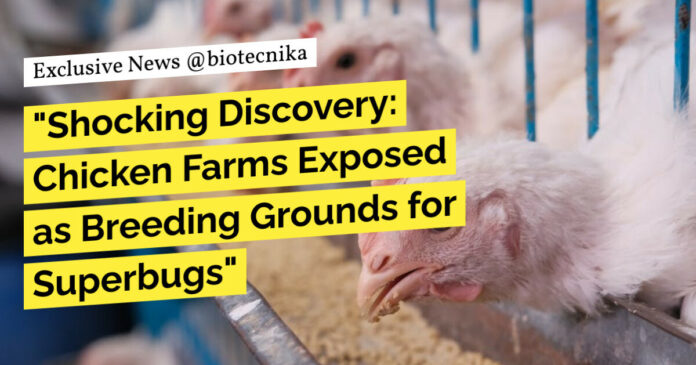Why Chicken Farms Are a Breeding Ground for Antibiotic Resistant Bacteria
Antimicrobial resistance (AMR) is a global concern, with bacteria becoming increasingly resistant to antibiotics and posing a threat to human and animal health. Recent research from the University of Nottingham has shed light on why chicken farms are particularly susceptible to breeding antibiotic resistant bacteria such as E. coli and Salmonella enterica. This article will discuss the findings of the study and its implications for AMR surveillance and treatment/control.
Understanding Antibiotic Resistance Bacteria:
Antibiotic resistance occurs when bacteria develop mechanisms to withstand the effects of antibiotics. Over time, the misuse and overuse of antibiotics in livestock farming have contributed to the spread of resistance. The University of Nottingham study aimed to explore how different species of bacteria, co-existing within the same microbial community, share antibiotic resistance-associated genetic material and implement similar resistance mechanisms.
The Study Methodology:
Researchers collected 661 E. coli and Salmonella bacteria isolates from chickens and their environments in 10 Chinese chicken farms and four abattoirs over a two-and-a-half-year period. The study utilized conventional microbiology DNA sequencing and data-mining methods powered by machine learning. This approach allowed for a large-scale analysis of the genomic content of the
two bacteria species within real-world settings.
Findings of the Study:
The study revealed several important findings:
1. Co-existence and Sharing of Genetic Material: E. coli and Salmonella enterica co-existing in the chicken gut showed a higher share of antibiotic resistance-related genetic material. This indicates that these bacteria can exchange genetic material, both within and potentially between species.
2. Similar Resistance Mechanisms: The analysis showed that the co-existing bacteria implemented more similar resistance and metabolic mechanisms compared to those existing in isolation. This suggests a strong co-evolution pathway in the development of antibiotic resistance.
Implications and Challenges with antibiotic resistant bacteria:
The discovery of shared genetic material and co-evolution of antibiotic resistance among different bacteria species has significant implications. It highlights the need for a comprehensive understanding of AMR and the challenges involved in surveillance and treatment/control. The study suggests that focusing solely on individual bacterial species may underestimate the threat to human health posed by AMR.
The University of Nottingham’s research provides valuable insights into the breeding of antibiotic resistant bacteria in chicken farms. The study demonstrates the importance of understanding the dynamics of bacterial communities and the exchange of genetic material in the development of AMR. Further research and investment in data mining and machine learning technologies are needed to effectively combat antibiotic resistance.
Keywords: antibiotic resistant bacteria, chicken farms, antimicrobial resistance, genetic material, co-evolution, resistance mechanisms, AMR surveillance, treatment, control, livestock farming, E. coli, Salmonella enterica, University of Nottingham, genetic analysis, China.
- SEO Powered Content & PR Distribution. Get Amplified Today.
- PlatoData.Network Vertical Generative Ai. Empower Yourself. Access Here.
- PlatoAiStream. Web3 Intelligence. Knowledge Amplified. Access Here.
- PlatoESG. Carbon, CleanTech, Energy, Environment, Solar, Waste Management. Access Here.
- PlatoHealth. Biotech and Clinical Trials Intelligence. Access Here.
- Source: https://www.biotecnika.org/2024/01/antibiotic-resistant-bacteria/


